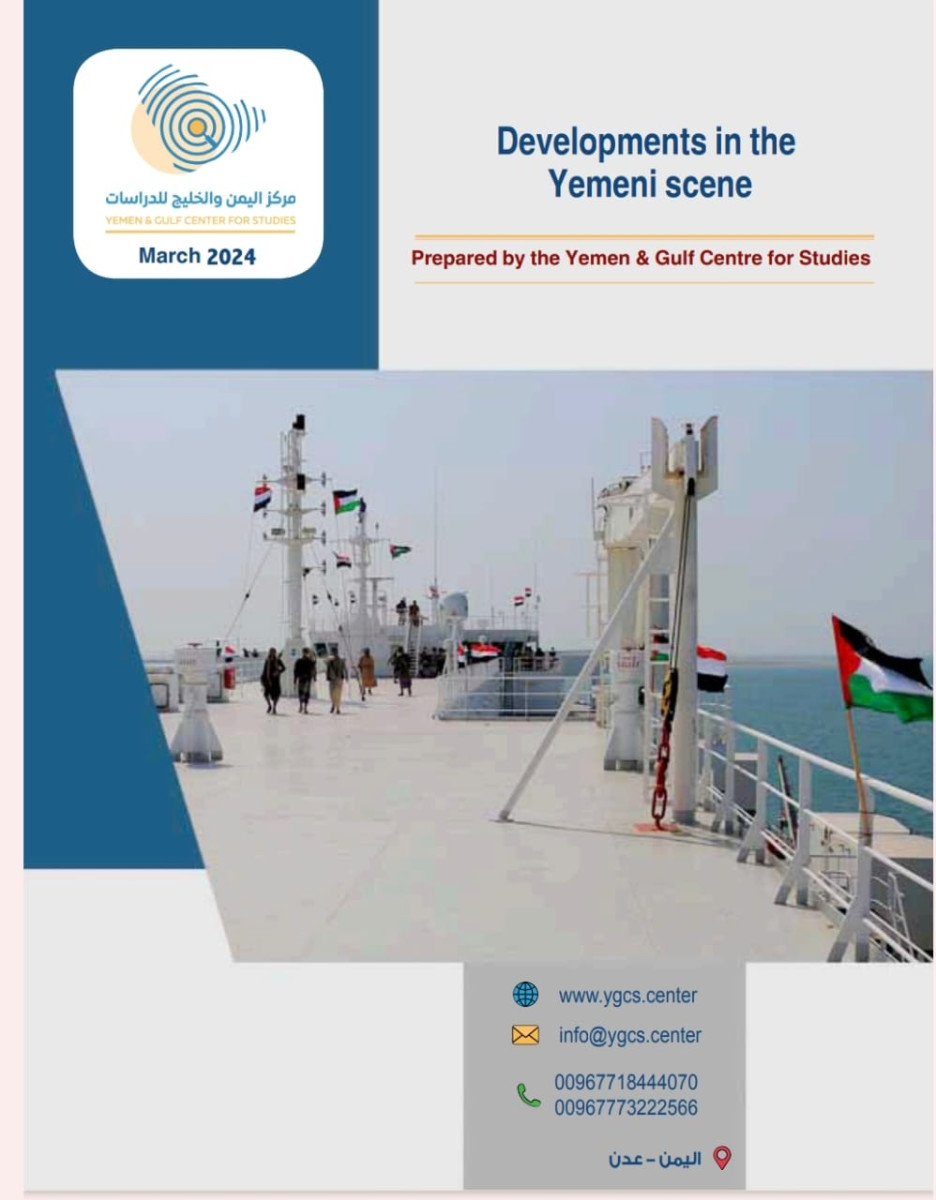a summary of the developments that took place in March
- 28 Apr 2024

Through its monthly publication "Developments in the Yemeni Scene," the Yemen and Gulf Centre for Studies endeavours to comprehensively address key developments pertaining to Yemen throughout each month. These encompass political, security, and economic aspects and external interactions. This initiative reflects the centre's research mandate, aimed at offering nuanced perspectives on the Yemeni situation.
The centre's primary objective is twofold: first, to provide a scholarly resource for stakeholders such as decision-makers, researchers, and journalists invested in the Yemeni file, facilitating informed decision-making and policy formulation. Second, it serves to maintain current awareness of Yemen's evolving dynamics, complementing other research outputs generated by the centre.
The monthly report adopts a systematic monitoring and analytical approach. It entails identifying noteworthy political, security, economic, and foreign developments within the Yemeni landscape throughout the month and analysing them comprehensively. This analytical treatment extends to the report itself and other research outputs of the centre, including analyses, reports, and assessments.
Executive summary:
Throughout March 2024, Yemen experienced a series of multifaceted developments, illuminating the complex trajectories of the Yemeni crisis in the contemporary era. While security dynamics took centre stage amidst heightened Houthi activity in the Red Sea region, stemming from the aftermath of the Al-Aqsa Flood Operation in October, significant political shifts also unfolded. These included ongoing Houthi efforts to exploit political and media platforms to amplify the reverberations of the Gaza conflict. Moreover, concerning indicators emerged pointing towards disruptions in the Yemeni peace process, coinciding with escalating mobilisation and counter-mobilization efforts between Yemen's legitimate government and the Houthi insurgency.
Security-wise, Yemen witnessed notable interactions primarily revolving around developments in the Red Sea region, given the sustained Houthi activities therein. Concurrently, Western nations intensified measures against the Houthis in response to these attacks. Additionally, Houthi factions persisted in conducting retaliatory operations against Yemeni groups amid ongoing threats posed by Al-Qaeda in Yemen.
On the economic front, Yemen grappled with developments underscoring the severity of its economic crisis, exacerbated by the ramifications of dual power struggles on the country's financial stability. Moreover, Yemeni markets faced acute shortages of essential goods, further compounded by the economic fallout from heightened tensions in the Red Sea.
Externally, attention centred on American endeavours to mitigate and contain the Houthi threat in the Red Sea, alongside indications of potential Chinese-Russian agreements aimed at mitigating risks associated with Houthi escalation in the region. Saudi Arabia continued its efforts to bolster peace initiatives in Yemen, notwithstanding UN reservations regarding the viability of these efforts, particularly in light of ongoing Houthi escalations in the Red Sea.
The stated views express the views of the author and do not necessarily reflect the views of the Center or the work team.
Comments